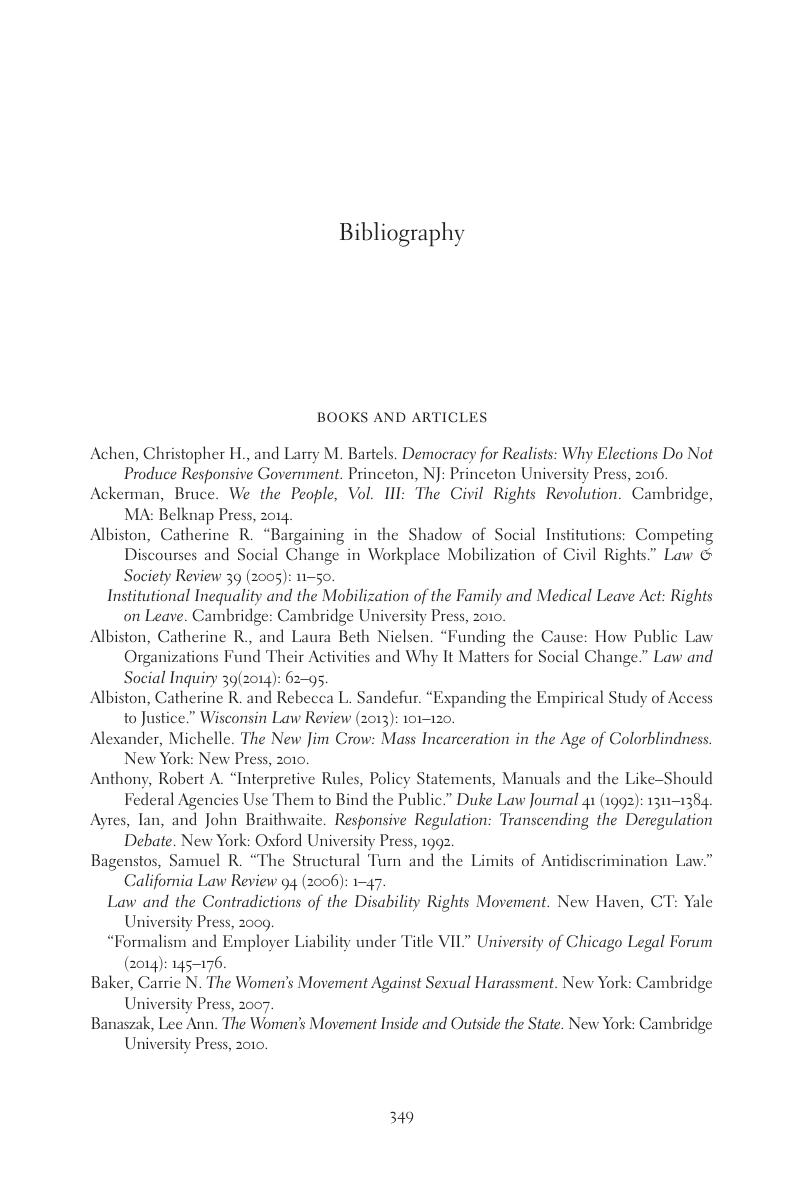 The Rights Revolution Revisited
The Rights Revolution Revisited Book contents
- The Rights Revolution Revisited
- The Rights Revolution Revisited
- Copyright page
- Dedication
- Contents
- Figures
- Tables
- Contributors
- Acknowledgments
- Part I Introduction
- Part II Implementing the Rights Revolution
- Part III Rights and Retrenchment
- Part IV The Future of the Rights Revolution
- Bibliography
- Index
- References
Bibliography
Published online by Cambridge University Press: 19 January 2018
- The Rights Revolution Revisited
- The Rights Revolution Revisited
- Copyright page
- Dedication
- Contents
- Figures
- Tables
- Contributors
- Acknowledgments
- Part I Introduction
- Part II Implementing the Rights Revolution
- Part III Rights and Retrenchment
- Part IV The Future of the Rights Revolution
- Bibliography
- Index
- References
Summary

- Type
- Chapter
- Information
- The Rights Revolution RevisitedInstitutional Perspectives on the Private Enforcement of Civil Rights in the US, pp. 349 - 373Publisher: Cambridge University PressPrint publication year: 2018
